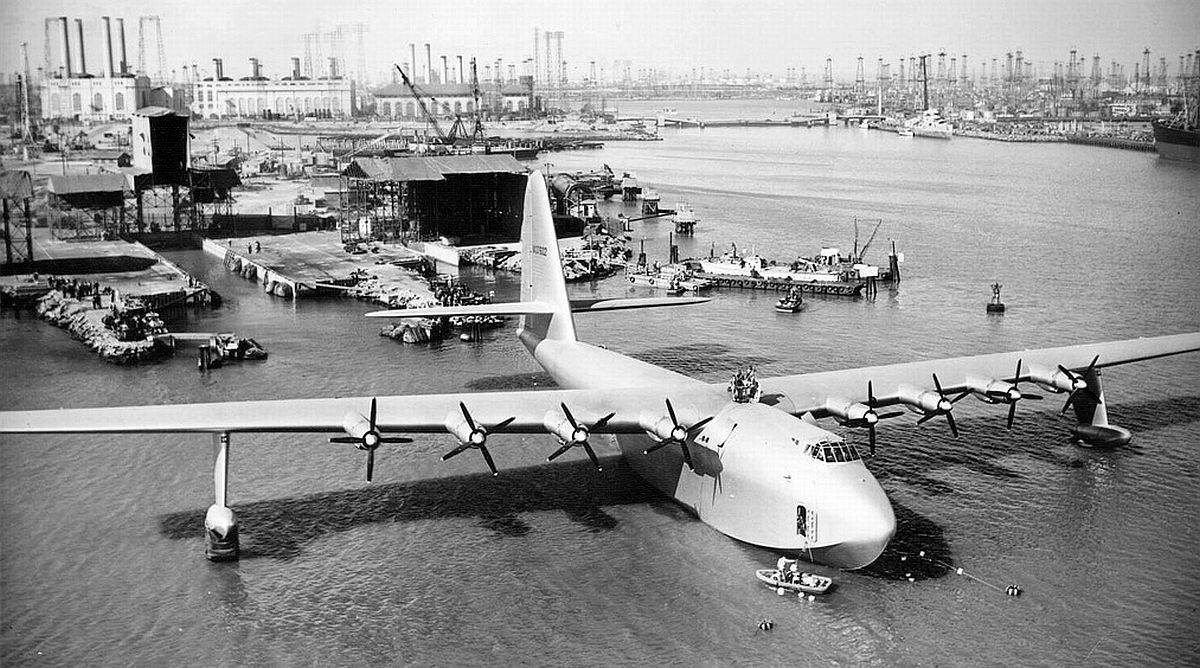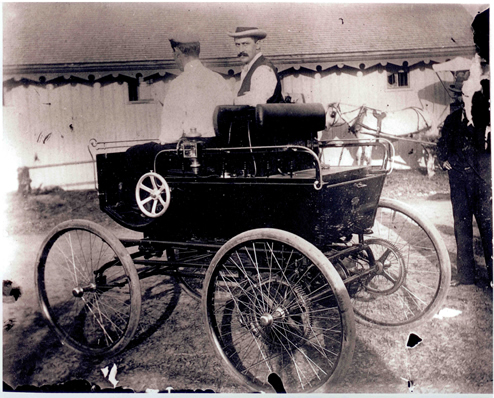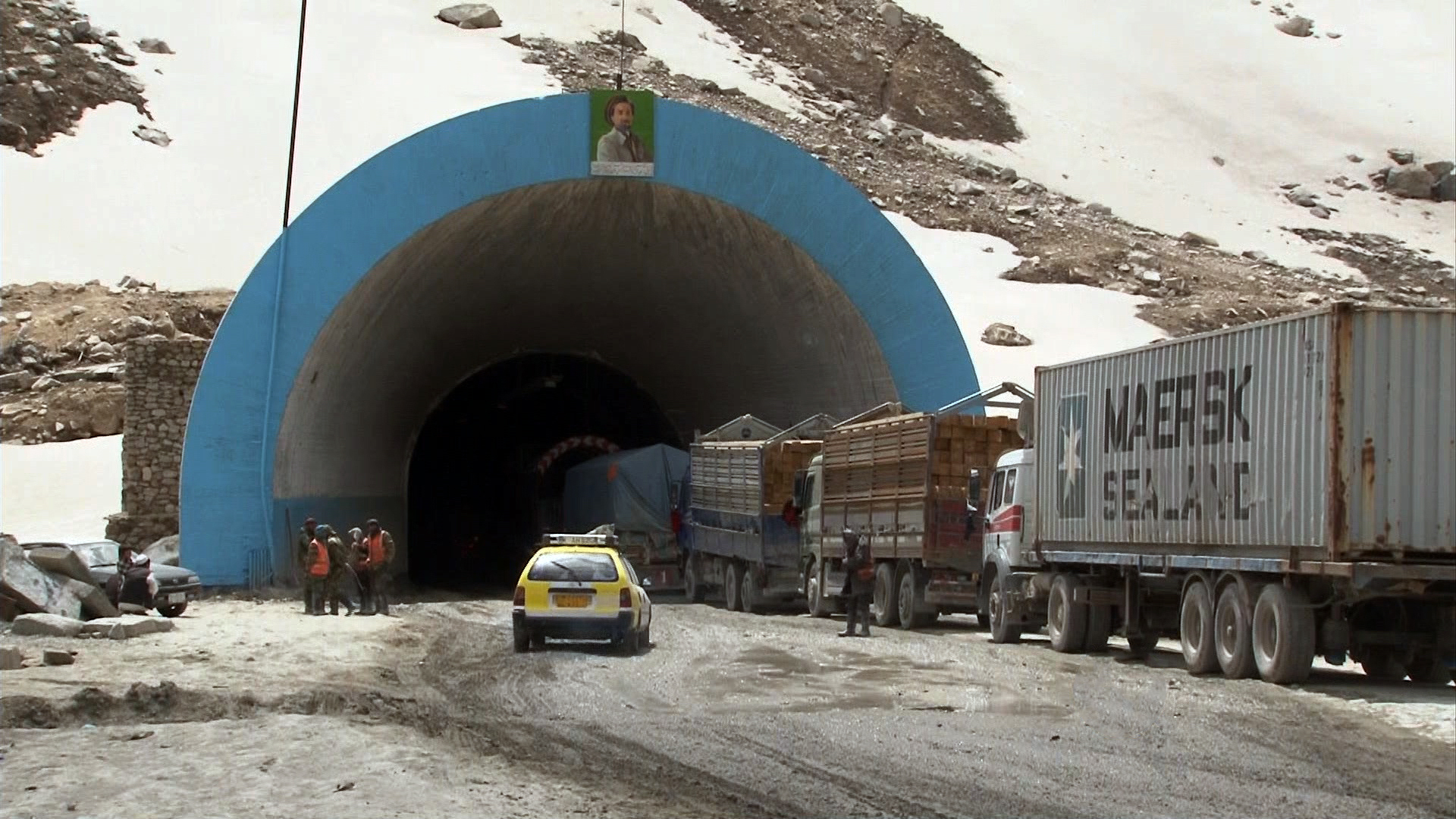1. 1947: The mighty Spruce Goose makes its debut flight

Photo: a2asimulations
It was on this date in 1947 that the largest aircraft ever built made its one and only flight. It was called the ‘Spruce Goose’ and it was the brainchild of the great Howard Hughes. Up until that point, there was nothing even close to the size of the mighty Spruce Goose, also referred to as the Hughes H-4 Hercules. With a wingspan over 320 feet wide, and standing almost 80 feet tall and 218 feet long this plane was massive, and almost the entire plane was built using birch wood laminated with plastic. It was designed to carry more than 700 troops into battle or over 150,000 lbs of machinery thanks to the 8 gigantic propeller engines. Construction started in 1941 right at the beginning of WWII, but wasn’t finished until 1946, after the war ended. It cost roughly $23 million to produce, which in the 1940’s was a staggering amount of money. Many people felt as if the giant plane would never be able to fly, but Hughes himself was the test pilot as he had been with many other planes by his design. He managed to get the big old bird 70 feet off the ground for over a mile before landing safely. It wasn’t a long flight, but a flight nonetheless. Unfortunately, that was the last time it would fly. The Spruce Goose is currently on display at the Evergreen Aviation Museum in McMinnville, Oregon.
2. 1902: The first gas powered locomobile

Photo: earlyamericanautomobiles

Photo: kcstudio
The early 1900’s brought the early examples of the automobile, or locomobile at the time. Most of them were powered by steam, which was incredibly inconvenient. First off you needed to carry three different types of fuel, the water to create the steam, kerosene to heat the water, and gasoline for the pilot light. If you wanted to take one out for a spin, you needed to let the water heat up, sometimes for up to 30 minutes, before there was enough steam pressure to power the wheels. So in cold conditions, it was even worse. Once you got up to temperature, you could only drive for roughly 20 minutes before you needed to pull over and fill up the water tanks. But then an engineer by the name of Andrew Riker figured out a way to use gasoline as the only source of fuel for an internal combustion engine. It was on this date in 1902 that Riker personally delivered the first gas powered locomobile to a customer in New York City. It was called the Model C and it was said to of cost an estimated $4,000 and had a 12hp engine.
3. 1982: Salang Tunnel explosion

Photo: cbsnews
According to reports, it was on this date in 1982 that a convoy consisting mainly of Soviet Soldiers entered the Salang Tunnel in Afghanistan when a truck exploded that left more than 3,000 casualties. The soldiers were apparently heading towards Kabul, the 1.7-mile long tunnel which stood 25 feet high and only 17 feet wide, all while being more than 11,000 feet above sea level which is the highest altitude of a tunnel in the world. The detail of exactly what happened are fairly scarce because the Soviet Army kept a tight lid on the story. But some reports say that there was a collision between a fuel truck and another oncoming vehicle that caused the explosion which resulted in an inferno that resulted in mass casualties. There were said to be more than 30 buses full of soldiers at the time, but most of the fatalities were caused by carbon monoxide.

